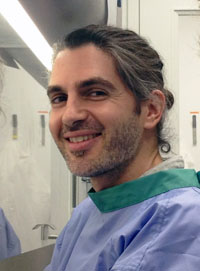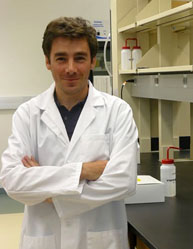 Dr. Remi FromentinA recurring message in our research updates relating to HIV cure strategies is the importance of eliminating the latent viral reservoir—infected memory CD4+ T cells harboring pockets of HIV in their DNA. While antiretroviral therapy (ART) can reduce HIV in the blood to undetectable levels, it fails to permanently purge the virus from this silent sanctuary.
Dr. Remi FromentinA recurring message in our research updates relating to HIV cure strategies is the importance of eliminating the latent viral reservoir—infected memory CD4+ T cells harboring pockets of HIV in their DNA. While antiretroviral therapy (ART) can reduce HIV in the blood to undetectable levels, it fails to permanently purge the virus from this silent sanctuary.
Addressing this drawback of standard anti-HIV drugs, a team of scientists, including amfAR fellow Dr. Remi Fromentin and ARCHE grantee Dr. Nicolas Chomont of the University of Montreal, former amfAR fellow Dr. Susana Valente of the Scripps Research Institute in Florida, and colleagues from the Vaccine and Gene Therapy Institute of Florida and the U.S. Military HIV Research Program in Maryland, tested a novel approach to attacking the HIV reservoir.
The most widely studied strategy for wiping out the HIV reservoir, dubbed “kick and kill,” uses drugs to spur latently infected cells into producing virus so that they can be identified and destroyed by the immune system or antiretrovirals. Writing in the July issue of mBio, Fromentin and associates describe their study of a new drug called didehydro-cortistatin A (dCA) that does the opposite: it inhibits reservoir activity.
 Dr. Nicolas ChomontAn analog of the natural product cortistatin A, which is derived from a marine sponge found in Southeast Asia, dCA targets the viral gene activator Tat. The Tat protein greatly increases HIV growth by enhancing its ability to replicate. Using several test tube models of HIV latency, the team found that by blocking Tat activity, dCA reduced the low-level viral production characteristic of the HIV latent state. Treatment with dCA also blocked virus reactivation, establishing “a nearly permanent state of latency.” Importantly, this inhibition persisted even after the drug was withdrawn. Follow-up testing in animal models is clearly required.
Dr. Nicolas ChomontAn analog of the natural product cortistatin A, which is derived from a marine sponge found in Southeast Asia, dCA targets the viral gene activator Tat. The Tat protein greatly increases HIV growth by enhancing its ability to replicate. Using several test tube models of HIV latency, the team found that by blocking Tat activity, dCA reduced the low-level viral production characteristic of the HIV latent state. Treatment with dCA also blocked virus reactivation, establishing “a nearly permanent state of latency.” Importantly, this inhibition persisted even after the drug was withdrawn. Follow-up testing in animal models is clearly required.
The authors conclude that their results highlight an alternative approach to the “kick and kill” strategy—stabilization rather than activation of latent pools of virus—and that dCA could be a valuable adjunct to current ART regimens. With reservoir activity (i.e., replication, reactivation, and replenishment) halted, the natural death of the infected cells could occur, resulting in the “continuous decay of the pool over time, possibly culminating in the long-awaited sterilizing cure.”
Dr. Laurence is amfAR’s senior scientific consultant.